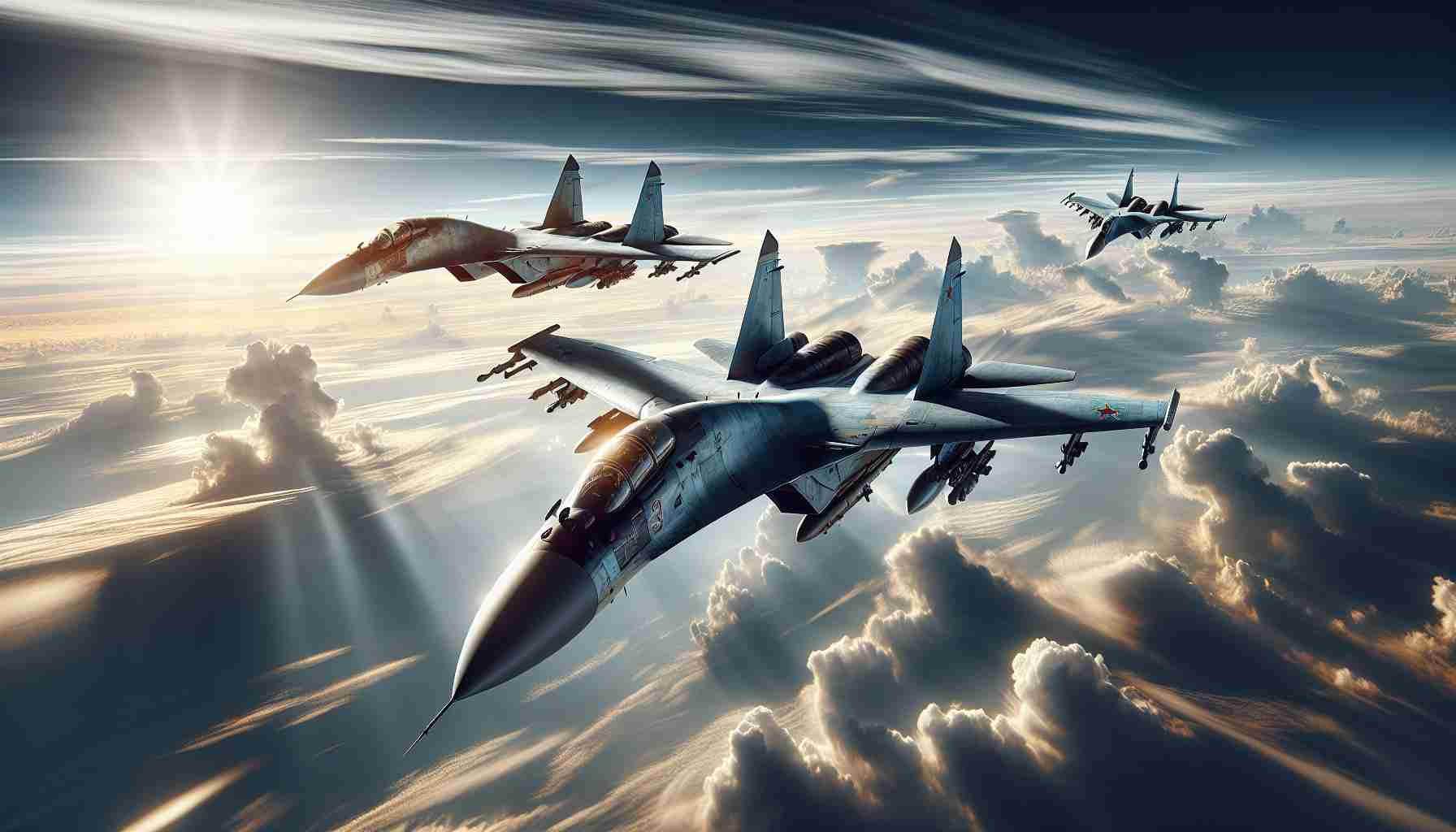- NORAD intervened with U.S. and Canadian fighter jets to escort Russian aircraft near Alaska and Canada.
- The action involved F-35 Lightning II jets and electronic surveillance, highlighting preparedness for defense.
- No breaches of U.S. or Canadian airspace occurred, indicating no immediate threat from the Russian jets.
- Russian aircraft likely engaged in Arctic training exercises, contributing to the heightened military presence.
- An F-35 encountered a malfunction, requiring an emergency landing, but the pilot was unharmed.
- NORAD also sent F-16s to Greenland as a precautionary measure amid ongoing global tensions.
In a dramatic display of aerial defense, the North American Aerospace Defense Command (NORAD) sprang into action last week, dispatching U.S. and Canadian fighter jets to escort a formation of Russian aircraft gliding through international airspace near Alaska and Canada. This high-stakes interception was a part of two combat air patrols launched to monitor several Russian planes operating within the Canadian and Alaskan Air Defense Identification Zones.
As the Russian formation approached the Alaska-Yukon Territory border, the U.S. response was swift and powerful. A pair of F-35 Lightning II jets, likely hailing from Eielson Air Force Base, soared into the sky, accompanied by KC-135 tankers and an E-3 electronic surveillance aircraft. Clad in sleek, angular designs, these fighters epitomized aerial might and readiness.
Despite the tense backdrop, NORAD confirmed that the Russian aircraft did not breach U.S. or Canadian airspace, thus posing no immediate threat. Speculation arose that the Russian jets were participating in a large-scale Arctic training exercise that concluded recently.
On the same day, an F-35 from Eielson experienced a malfunction, prompting the pilot to make an emergency landing. Fortunately, they were released from the hospital after evaluation.
To top off an eventful day, NORAD also deployed Alaska-based F-16 fighters to Greenland, again emphasizing that these measures were precautionary and unrelated to a direct threat.
Key Takeaway: The skies over North America remain vigilant, reflecting ongoing global tensions, yet both nations demonstrated their readiness to protect sovereign airspace without escalating conflict.
A New Era of Air Defense: Insights on NORAD’s Recent Engagements
In recent days, the North American Aerospace Defense Command (NORAD) has showcased its commitment to national security through the rapid response of fighter jets to Russian aircraft in international airspace. This incident underscores broader patterns and implications in military defense strategies between the U.S., Canada, and Russia.
How Does This Incident Reflect Current Military Strategies?
The engagement of U.S. and Canadian fighter jets in this instance demonstrates a proactive military posture in the face of potential threats. It highlights:
– Increased Vigilance: The nature of the response indicates a shift toward heightened surveillance and readiness in airspace monitoring.
– Joint Operations: The collaboration between the U.S. and Canadian forces is pivotal in ensuring comprehensive defense coverage over North American airspace.
What are the Implications of Russian Aircraft Activities Near North America?
The activities of Russian aircraft near Alaska and Canada can be interpreted as a strategic move in the realm of international relations. Key implications include:
– Military Signaling: Russia’s extensive operations suggest a show of force, potentially aimed at testing North American responses.
– Political Tensions: The interception illustrates evolving geopolitical dynamics that may strain U.S.-Russia relations, mirrored by increasing military drills on both sides.
What Are the Key Features and Innovations of NORAD’s Aircraft?
The aircraft employed in these patrols represent technological advancements in military aviation:
– F-35 Lightning II: Known for its stealth and versatility, the F-35 enhances situational awareness and strikes capabilities.
– E-3 Aircraft: This electronic surveillance airframe provides crucial intelligence-gathering capabilities, underpinning NORAD operations.
– KC-135 Tankers: Essential for providing in-flight refueling, they significantly extend the operational range of interceptors.
Related Insights on Air Defense Operations
– Pros and Cons of Increased Air Patrols: While increased air patrols enhance security, they can also lead to heightened tensions and potential miscalculations.
– Future Trends in Military Technology: Continuous investments in drone technology and unmanned aerial vehicles are likely as militaries evolve to face modern threats.
Answers to Key Questions
1. What triggered NORAD’s response to the Russian aircraft?
– The response was initiated as part of routine air defense protocols to monitor foreign military aircraft operating in close proximity to North American airspace.
2. Are these engagements common between U.S. and Russian forces?
– Yes, such intercepts have been documented over the years; however, they have increased in frequency amid rising geopolitical tensions.
3. What measures are being taken to ensure safety during such intercepts?
– NORAD emphasizes precautionary procedures, including strict rules of engagement to prevent escalation and ensure the safe monitoring of airspace.
For more insights into military operations and air defense systems, visit NORAD’s official website.
